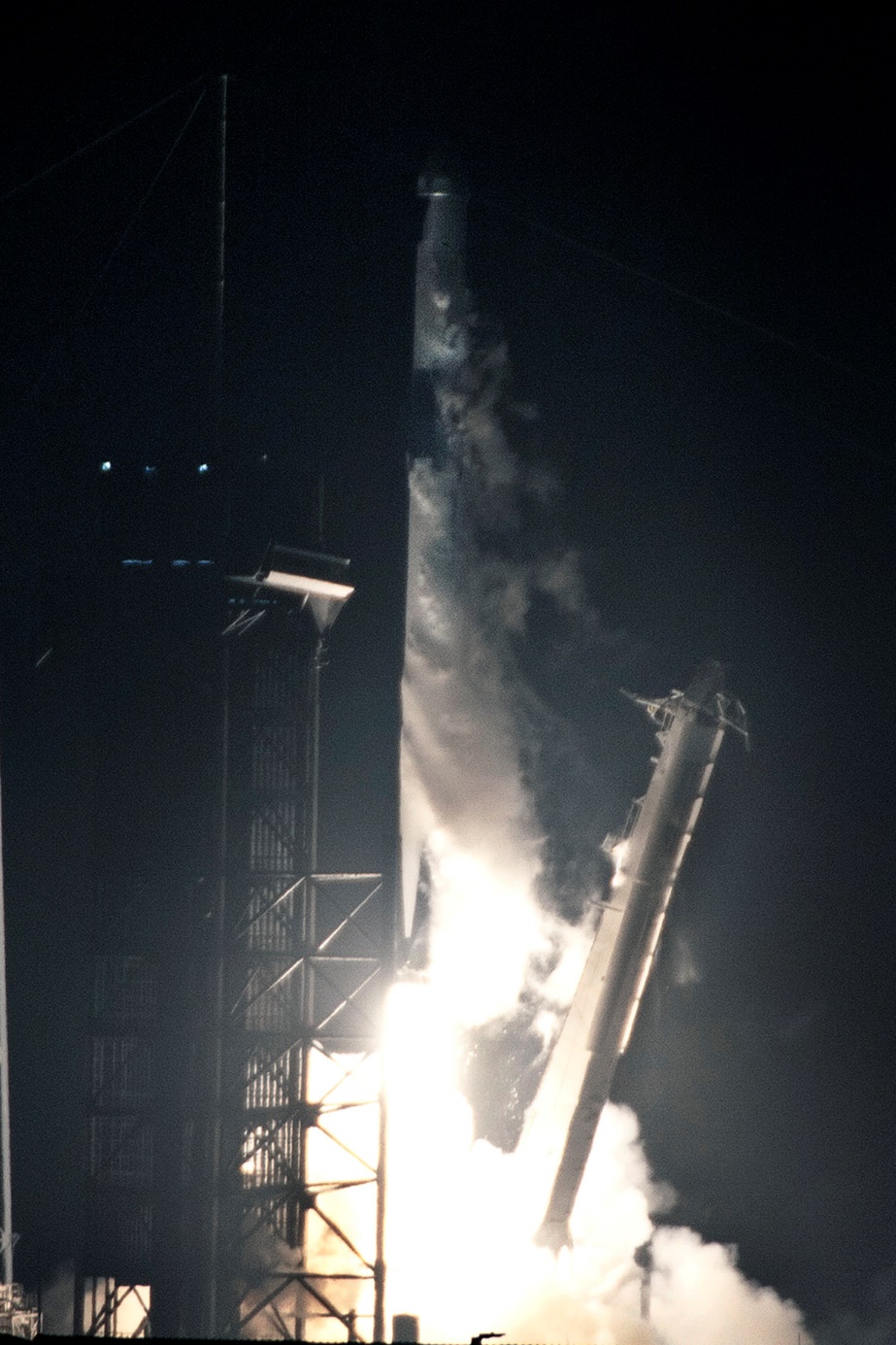
Falcon 9 CRS-24 Launch, Photo Courtesy Carleton Bailie/Spaceline
Falcon 9 Launches CRS-24 Payload For NASA
December 21, 2021 | Reported by Cliff Lethbridge
A SpaceX Falcon 9 rocket successfully launched the CRS-24 payload for NASA at 5:07 a.m. EST today from Launch Pad 39A at the Kennedy Space Center. The first stage booster employed today was being flown for the first time and was successfully recovered with a landing on the "Just Read the Instructions" drone ship positioned on the Atlantic Ocean about 400 miles northeast of Cape Canaveral. CRS-24 is a Cargo Dragon spacecraft performing a resupply mission to the International Space Station (ISS) under the Commercial Resupply Services contract between NASA and SpaceX. Autonomous docking to ISS is scheduled for around 4:30 a.m. EST on Wednesday, December 22, 2021. CRS-24 carries a total of 6,590 pounds of cargo, including 852 pounds of crew supplies, 2,468 pounds of science investigations, 400 pounds of spacewalk equipment, 724 pounds of vehicle hardware and 72 pounds of computer resources. The spacecraft will spend about a month at ISS before returning to Earth carrying a number of scientific payloads and experiments.
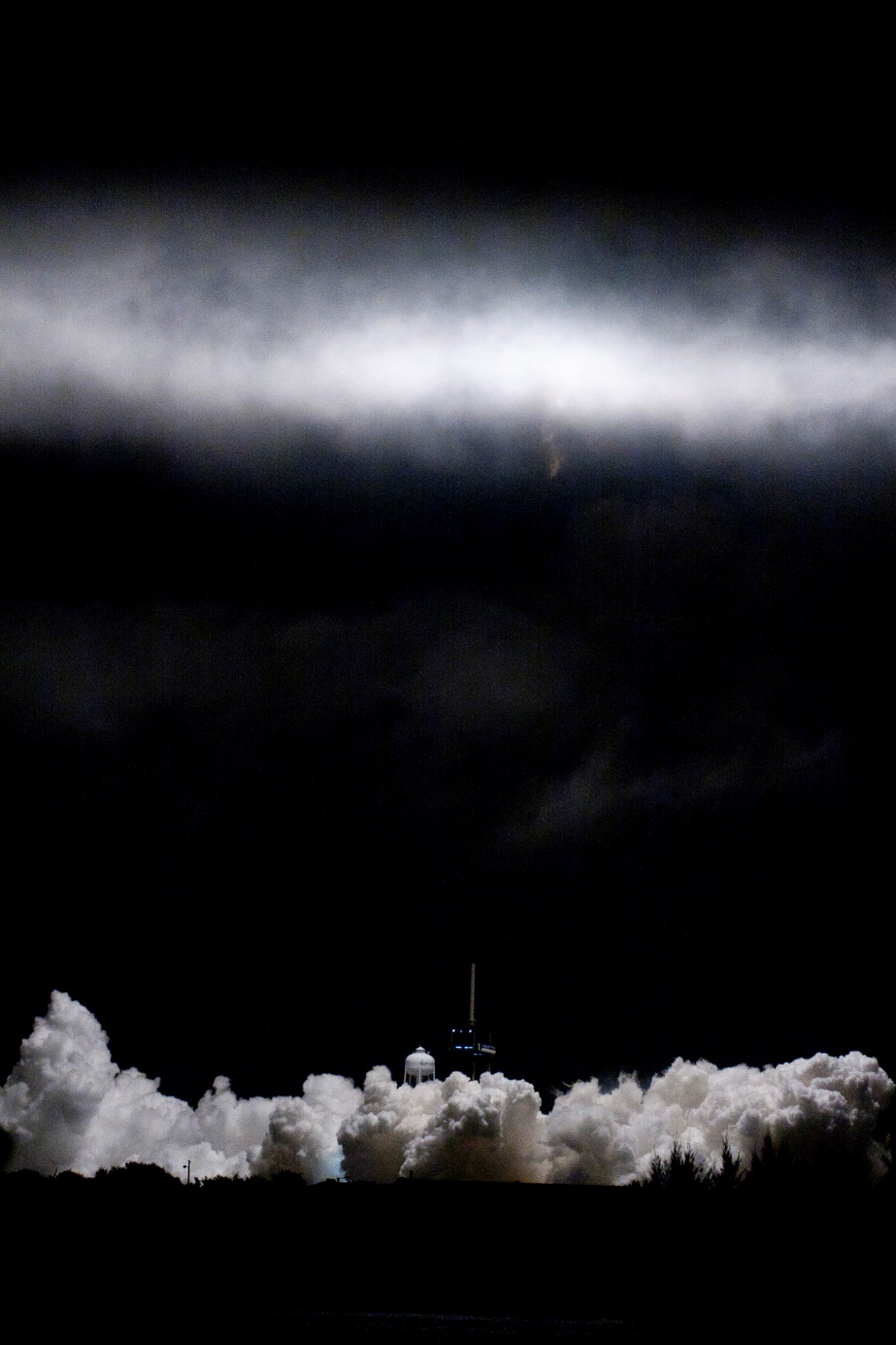
Falcon 9 CRS-24 Obscured By Clouds, Photo Courtesy Carleton Bailie/Spaceline
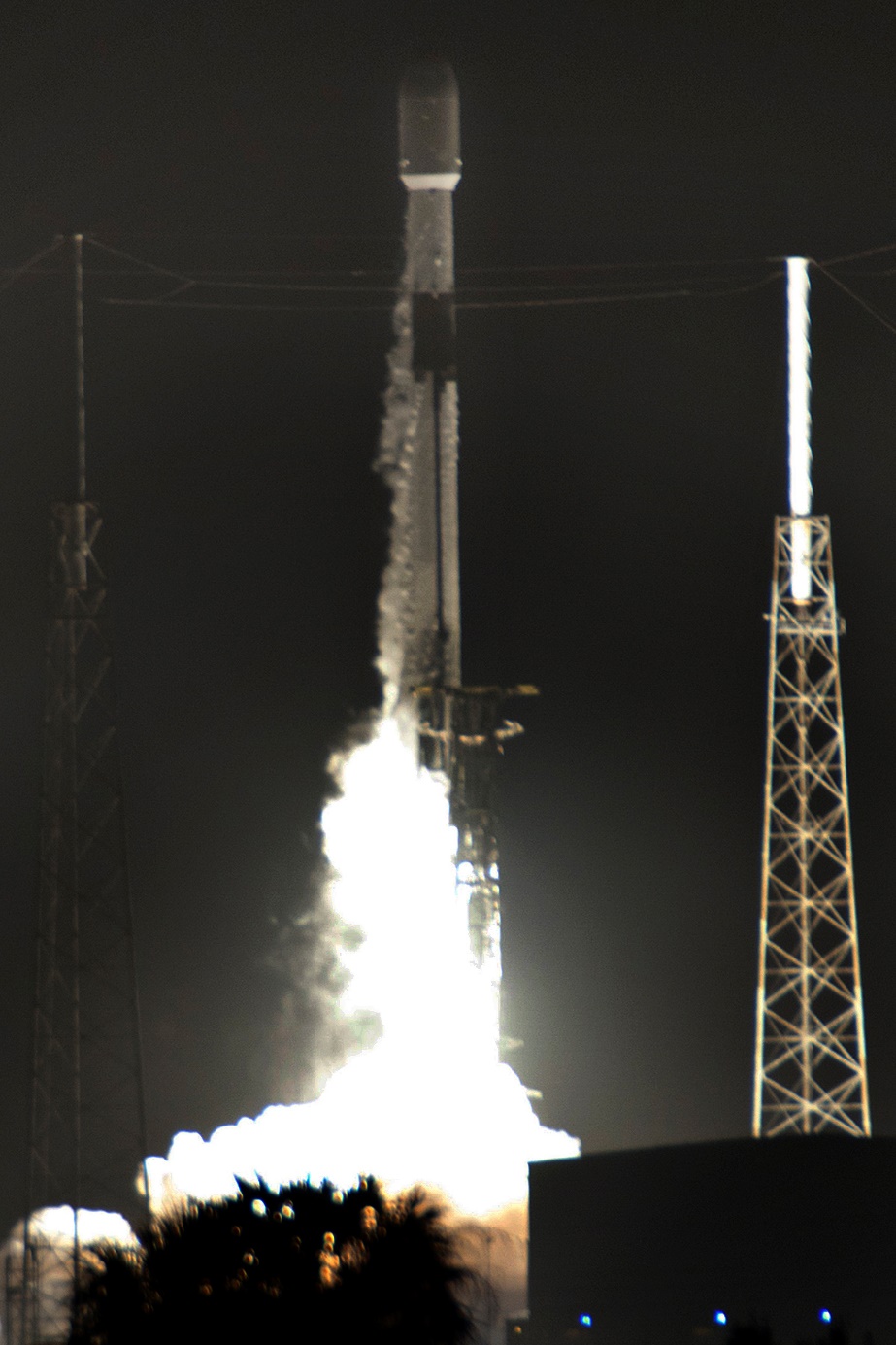
Falcon 9 Turksat-5B Launch, Photo Courtesy Carleton Bailie/Spaceline
Falcon 9 Launches Turkish Communications Satellite
December 18, 2021 | Reported by Cliff Lethbridge
A SpaceX Falcon 9 rocket successfully launched the Turksat-5B satellite at 10:58 p.m. EST today from Launch Pad 40 on Cape Canaveral Space Force Station. The first stage booster employed today was being flown for the third time, having previously supported the CRS-22 and Crew-3 missions. The booster was recovered successfully today with a landing on the "A Shortfall of Gravitas" drone ship positioned on the Atlantic Ocean about 400 miles east of Cape Canaveral. Turksat-5B is a Turkish communications satellite which will serve in a geostationary orbit 22,000 miles above Earth at 42 degrees East Longitude. The satellite was built by Airbus Defense and Space and weighed 9,900 pounds at launch. Powered by two deployable solar panels, the satellite has a design lifetime of 15 years. It can transmit at 15 kilowatts, allowing the satellite to serve Turkey, the Middle East, Europe and Africa with 50 Gbps high-throughput Internet service for civilian and military applications.
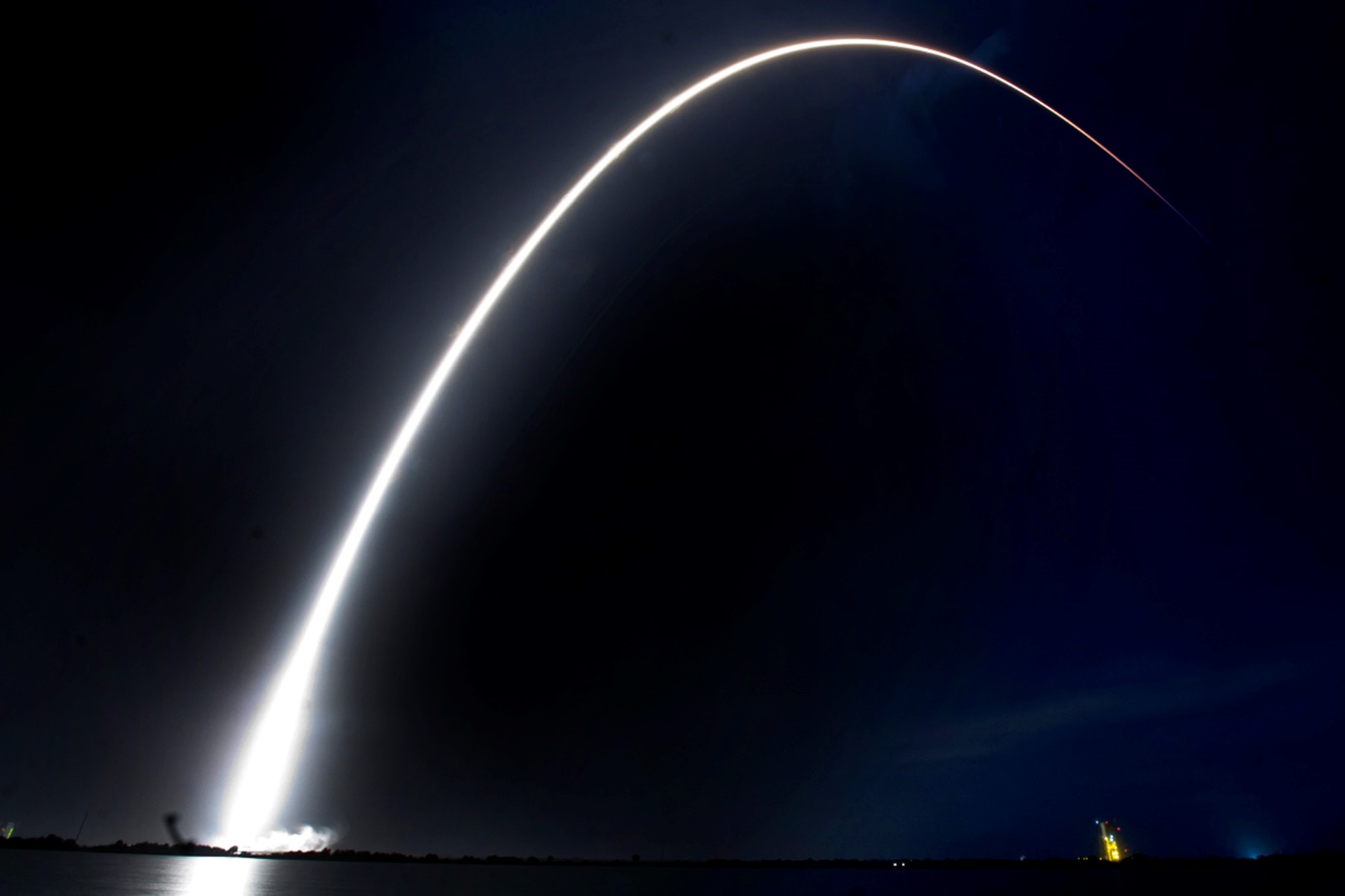
Falcon 9 Turksat-5B Streak Shot, Photo Courtesy Carleton Bailie/Spaceline
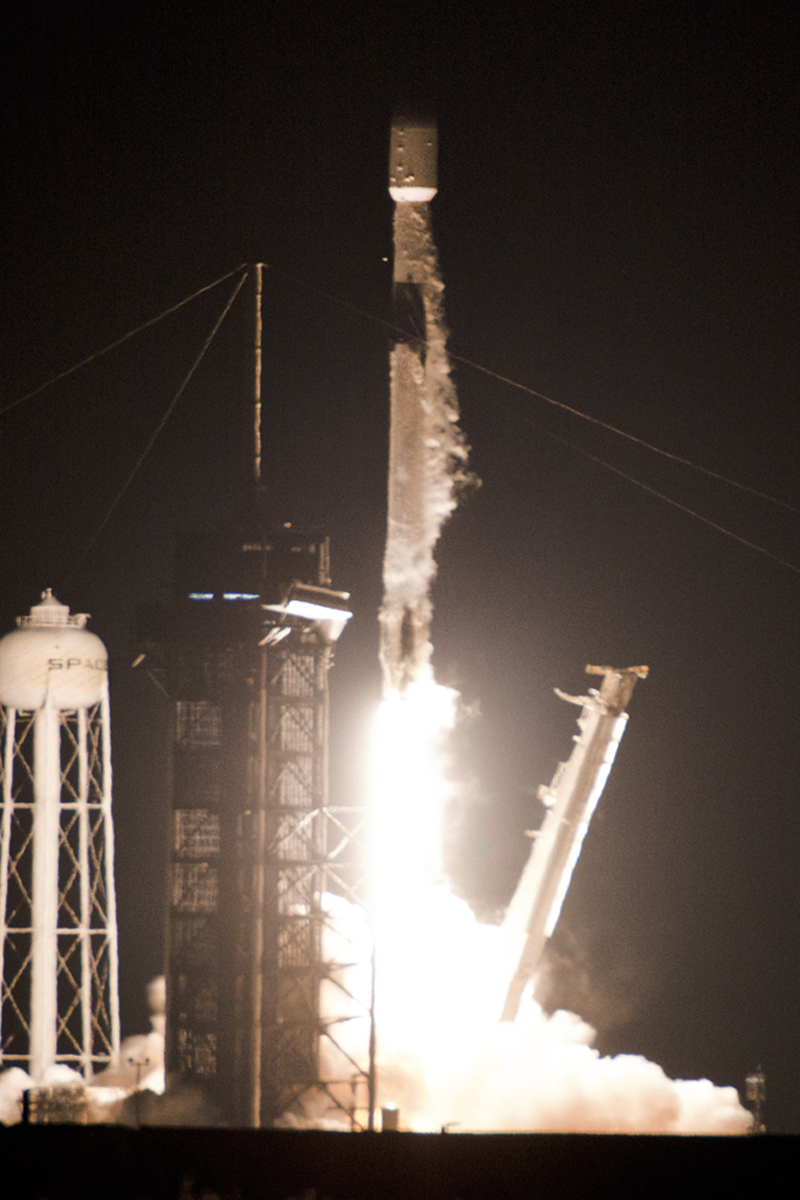
Falcon 9 IXPE Launch, Photo Courtesy Carleton Bailie/Spaceline
Falcon 9 Launches IXPE Payload For NASA
December 9, 2021 | Reported by Cliff Lethbridge
A SpaceX Falcon 9 rocket launched the Imaging X-ray Polarimetry Explorer (IXPE) payload for NASA at 1:00 a.m. EST today from Launch Pad 39A at the Kennedy Space Center. The first stage booster employed today was being flown for the fifth time, having previously supported the Crew-1 and Crew-2 manned Crew Dragon missions, the SXM-8 mission and the CRS-23 mission. The booster was successfully recovered today with a landing on the "Just Read the Instructions" drone ship positioned on the Atlantic Ocean about 400 miles east of Cape Canaveral. IXPE spacecraft separation occurred at 33 minutes after launch. About a minute later, IXPE unfurled its solar arrays. Mission operators received the first telemetry data from the spacecraft about 40 minutes after launch.
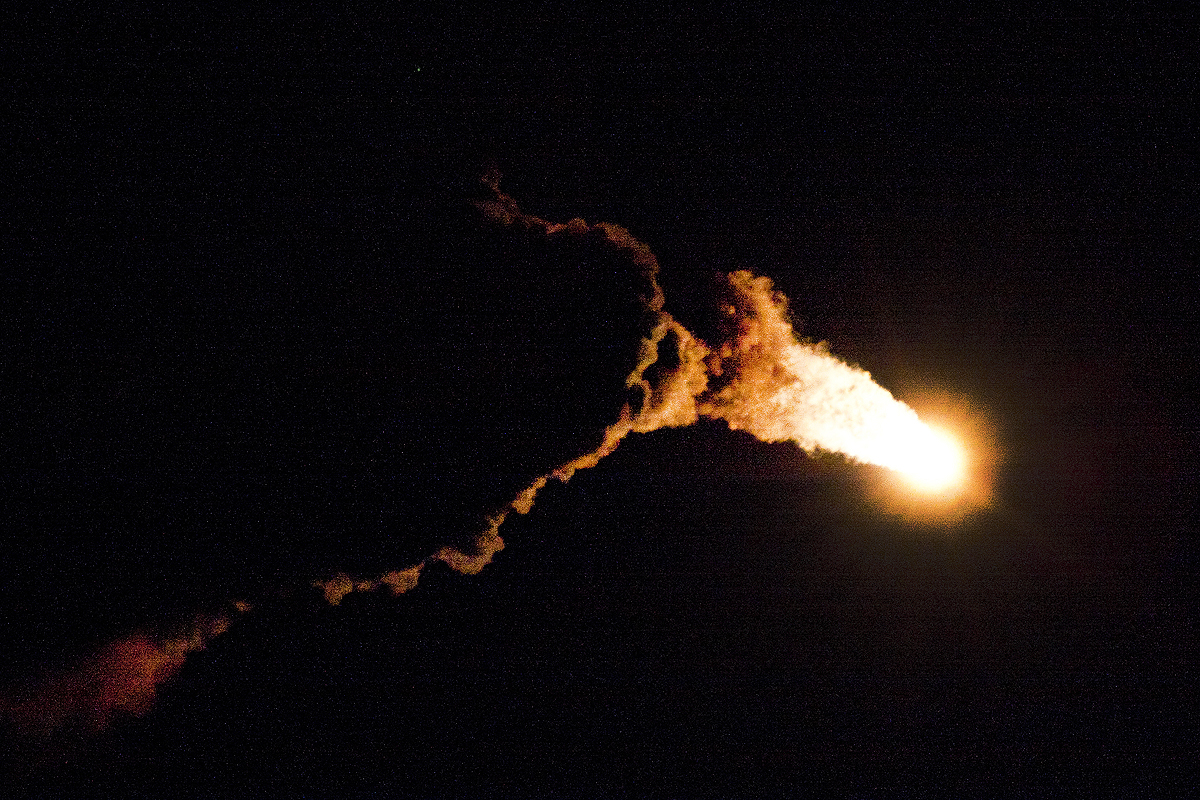
Falcon 9 IXPE Downrange, Photo Courtesy Carleton Bailie/Spaceline
IXPE is a joint venture between NASA and the Italian Space Agency. It is the first space-based observatory dedicated to measuring the polarization of X-rays from the most extreme and mysterious objects in the universe, including supernova remnants, supermassive black holes and dozens of other high-energy objects. IXPE carries three state-of-the-art space telescopes with special polarization-sensitive detectors. Polarization is a property of light that holds clues to the environment from which the light originates. IXPE's first light operations are scheduled to begin in January, 2022. NASA's Marshall Space Flight Center manages the IXPE mission for the space agency's Science Mission Directorate as a project of the NASA Explorers Program, which traces its name back to Explorer-I, the first U.S. satellite, which was launched on January 31, 1958. The IXPE mission is set to last about two years.
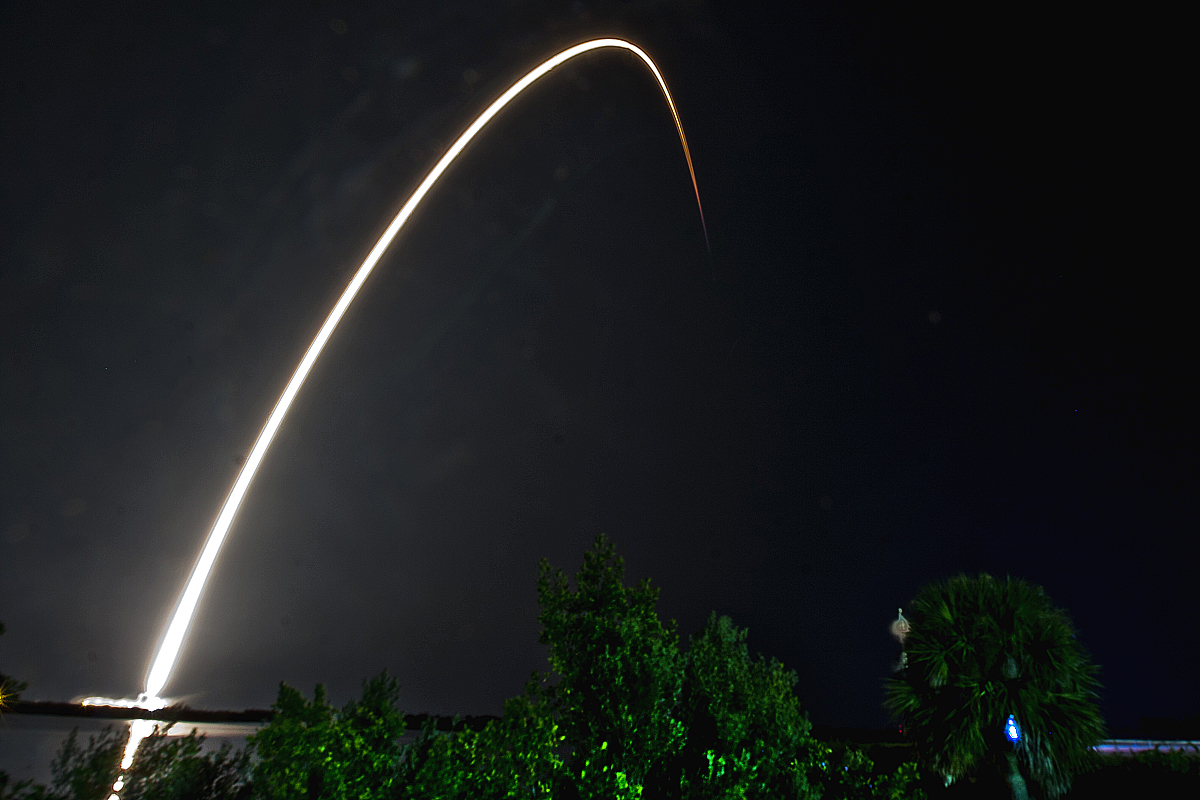
Falcon 9 IXPE Streak Shot, Photo Courtesy Carleton Bailie/Spaceline
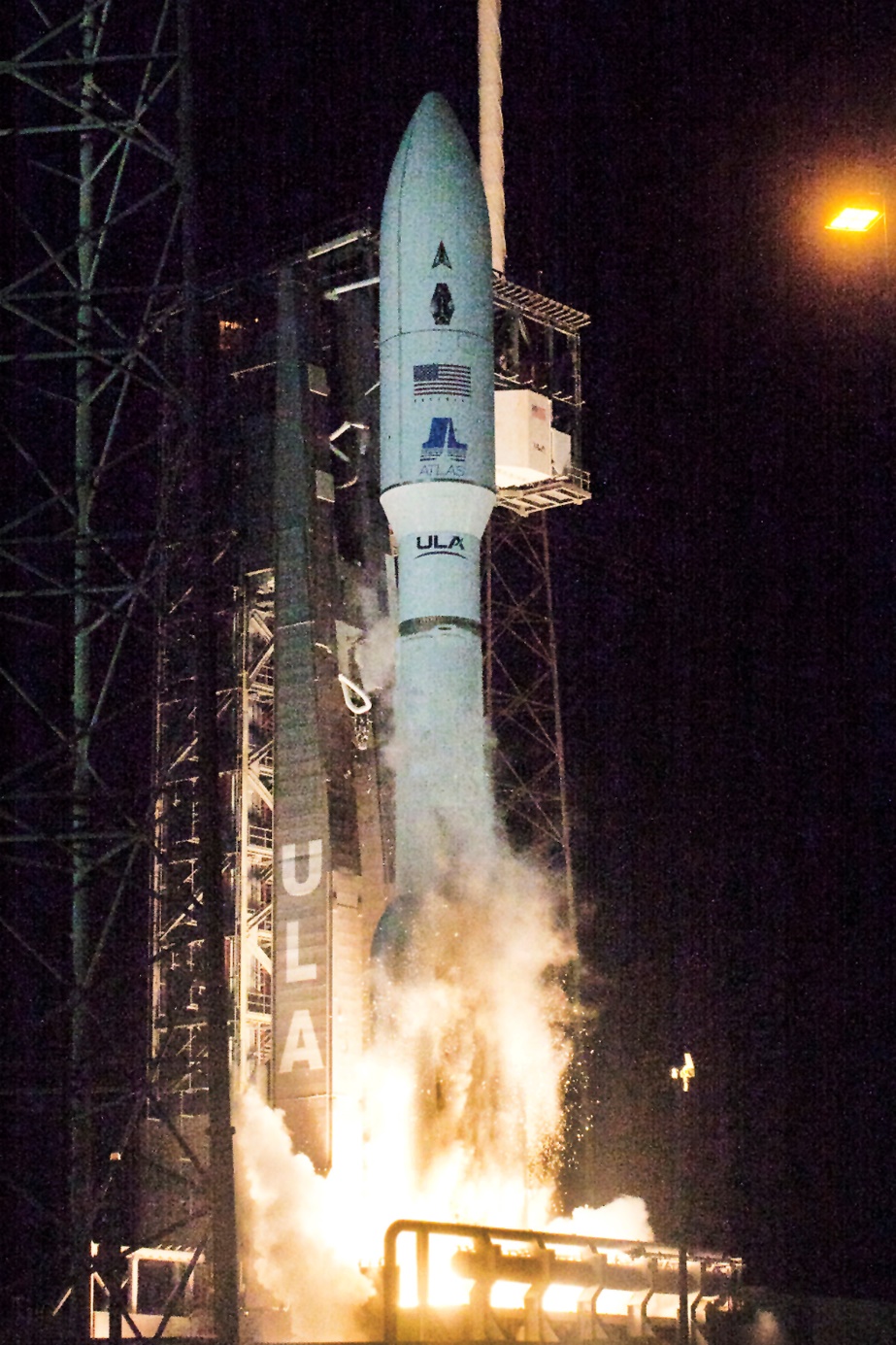
Atlas V STP-3 Launch, Photo Courtesy Carleton Bailie/Spaceline
Atlas V Launches STP-3 Payload For Space Force/NASA
December 7, 2021 | Reported by Cliff Lethbridge
A United Launch Alliance Atlas V rocket successfully launched the STP-3 payload for the U.S. Space Force and NASA at 5:19 a.m. EST today from Launch Pad 41 on Cape Canaveral Space Force Station. Launch was originally scheduled for December 5, 2021 but was postponed 48 hours to allow repair of an RP-1 (kerosene) fuel leak in a ground support system and subsequent testing of the integrity of the fuel. Today's launch was delayed from 4:04 a.m. EST to 5:03 a.m. EST and ultimately 5:19 a.m. EST due to unacceptable upper level winds. The rocket was the most powerful variant of the Atlas V, called Version 551, featuring a five-meter payload fairing, five solid rocket boosters and a single-engine Centaur second stage. The rocket performed flawlessly in the longest mission for an Atlas V, using a direct ascent profile in which the payload was deployed to geostationary orbit over seven hours after launch.

Atlas V STP-3 Launch, Photo Courtesy Cliff Lethbridge/Spaceline
STP-3 (Space Test Program-3), a spacecraft owned and operated by the U.S. Space Force Space Systems Command, is comprised of a number of payloads. The primary payload is STPSat-6, which is itself hosting nine payloads which include the Space and Atmospheric Burst Reporting System-3 (SABRS-3) and NASA's Laser Communications Relay Demonstration (LCRD), an important experiment in laser communications between the payload and ground stations in California and Hawaii. NASA hopes to determine the feasibility of using groundbreaking laser communications technology to eventually replace radio communications currently in use. Lasers can operate at speeds thousands of times greater than radio and also offer the transmission of exponentially greater data capability. NASA says the technology will be used in the Artemis moon and Mars missions as well as other applications. Lasers also use less size and weight than traditional radio technology making them ideal for space-based communications. The STP-3 payload also hosts a number of other scientific and technology investigations.
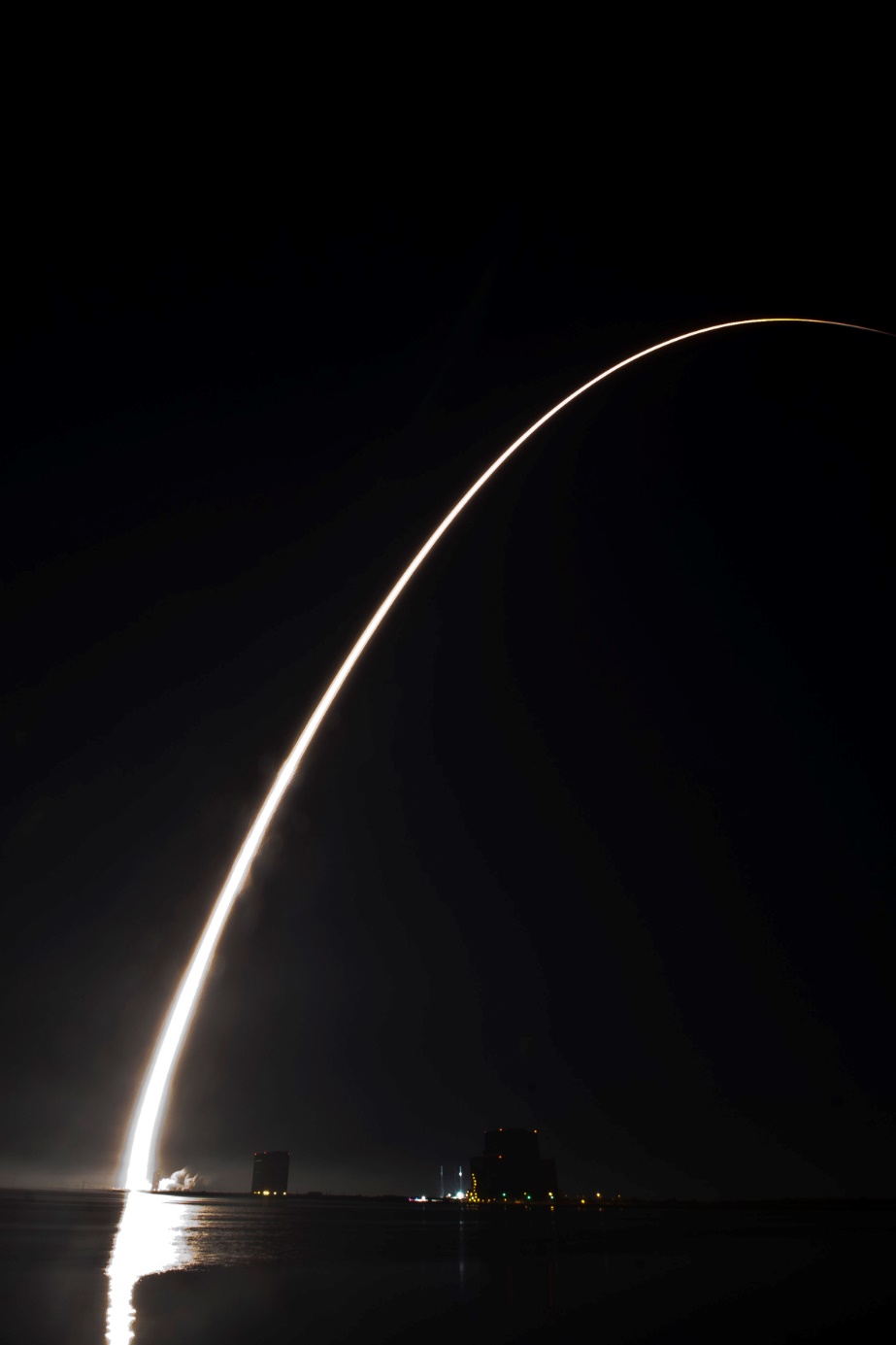
Atlas V STP-3 Streak Shot, Photo Courtesy Carleton Bailie/Spaceline
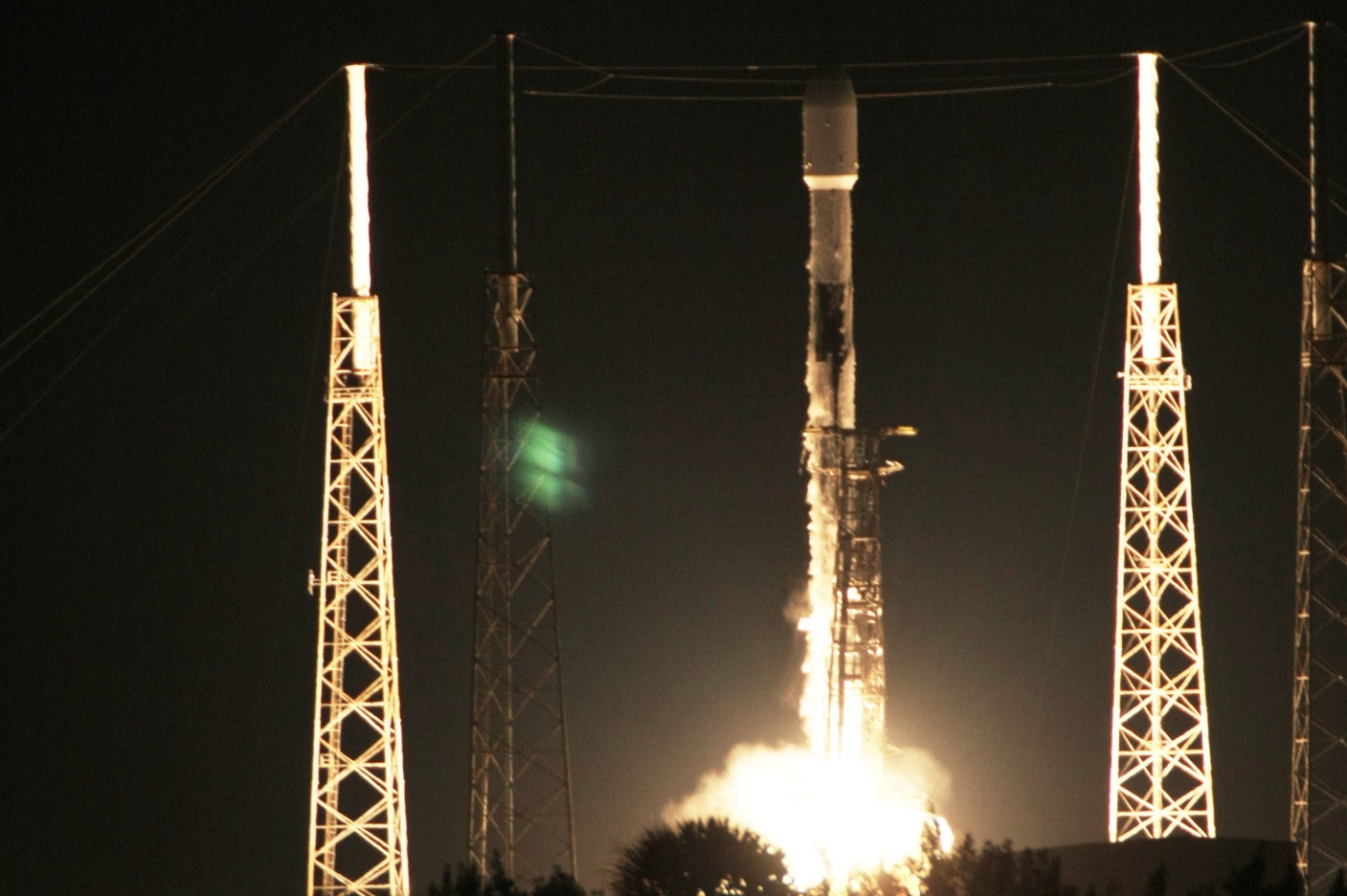
Falcon 9 Starlink 4-3 Launch, Photo Courtesy Buck Bailie/Spacelne
Falcon 9 Launches Starlink Satellites And Rideshares
December 2, 2021 | Reported by Cliff Lethbridge
A SpaceX Falcon 9 rocket successfully launched 48 Starlink satellites and two BlackSky Global Rideshare satellites at 6:12 p.m. EST today from Launch Pad 40 on Cape Canaveral Space Force Station. The first stage booster employed today was being flown for the ninth time, having previously supported the GPS III-SV03 mission, the Turksat-5A mission, the Transporter-2 mission and five Starlink missions. The booster was successfully recovered today with a landing on the "A Shortfall of Gravitas" drone ship positioned on the Atlantic Ocean about 400 miles northeast of Cape Canaveral. The mission, designated Starlink 4-3, deployed 48 Starlink satellites and two BlackSky Global Earth-imaging Rideshare satellites. Today's launch of Starlink satellites brings to a total of 1,892 launched to date, although not all of these are operational or still in orbit. Starlink is a SpaceX-owned and operated constellation of broadband Internet satellites intended to provide space-based Internet service to unserved or underserved markets throughout the world.
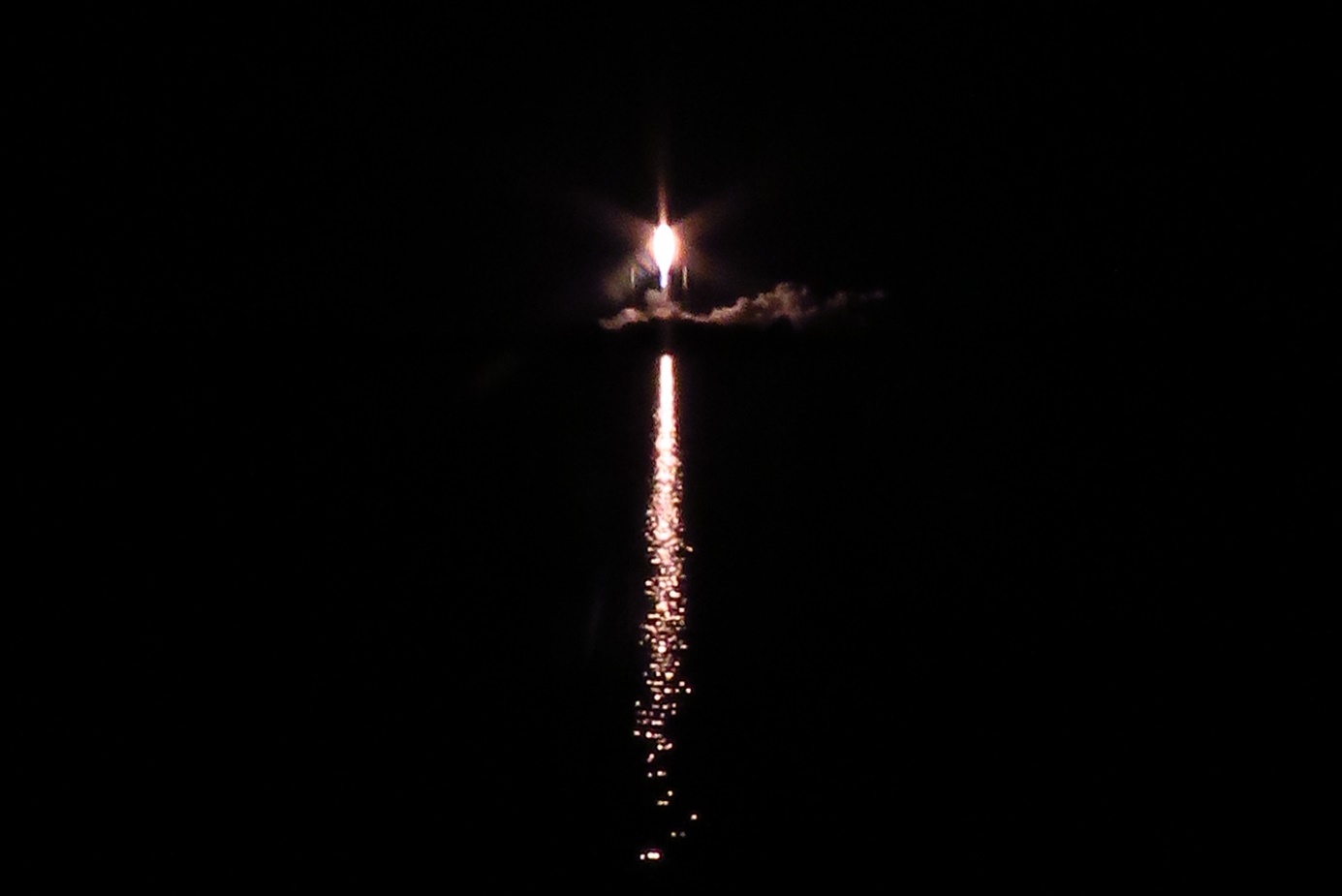
Falcon 9 Starlink 4-3 Launch, Photo Courtesy Buck Bailie/Spaceline













